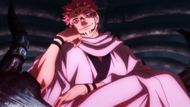Few arcs in modern shonen manga have sparked as much debate as Jujutsu Kaisen’s Culling Games. For some, it’s an overstuffed, confusing mess that arrived right after the series’s best arc (Shibuya Incident), suffering from pacing issues and character overload. For others, it’s an ambitious, chaotic masterpiece that pushes Gege Akutami’s storytelling to new heights.
So which is it? A stumble after perfection, or a misunderstood triumph that will be remembered differently in hindsight? I’d argue it might be both, and that duality is what makes the Culling Games so fascinating to dissect.
Any discussion of the Culling Games in Jujutsu Kaisen has to begin with the elephant in the room: the Shibuya Incident. Shibuya wasn’t just a good arc; it was a storytelling earthquake.
Gojo’s sealing, Sukuna’s rampage, Mahito’s climax, the Kenjaku reveal. It was one devastating plot twist after another. It shattered the series’ status quo and instantly became one of the most acclaimed arcs in modern shonen.

The problem? Following up with that was always going to be near impossible. Shibuya was the kind of narrative that raised expectations sky-high, conditioning fans to expect weekly peak storytelling. So when the Culling Games began with a slower, more methodical setup, many readers labeled it “underwhelming” before it had even hit its stride.
But comparing Shibuya and Culling Games as if they serve the same purpose is a mistake. Where Shibuya was the climax of everything built since Volume 1, Culling Games is a transitional arc, one that reorients the story, expands the lore, and sets the stage for the endgame. It’s not trying to be Shibuya 2.0, and judging it by that metric misses what it actually accomplishes.
The pacing debate: Chaos or design?

One of the biggest criticisms of the Culling Games in Jujutsu Kaisen is its pacing. Unlike Shibuya, which moved like a bullet train toward Gojo’s sealing and Sukuna’s release, the Culling Games sprawl. Multiple colonies, simultaneous battles, dozens of new characters, and a rule system built on points can feel overwhelming and disjointed.
But that chaos is also the point. The Culling Games isn’t meant to be neat. It’s a ritual orchestrated by Kenjaku, a manufactured death game with overlapping battles and conflicting agendas. Instead of cleanly staggered fights, we experience the story like the characters themselves: overwhelmed, confused, struggling to keep track of every threat.
Some find this exhilarating, others exhausting. Personally, I think the arc reads better in binge format than weekly. When consumed chapter by chapter with long breaks, it feels like a mess of disconnected fights. But when read in one sweep, the overlapping battles gain coherence, the pacing feels deliberate, and the chaos has rhythm.
The fights: Peak Jujutsu Kaisen action

If there’s one thing nearly everyone agrees on, it’s that the fights in the Culling Games in Jujutsu Kaisen are some of the best in the entire series.
- Hakari vs. Kashimo: A battle that pushed immortality mechanics and probability to absurd levels, making Hakari one of the most entertaining fighters in shonen.
- Yuta vs. Ryu & Uro: A chaotic three-way showdown that showcased Yuta’s growth and adaptability.
- Megumi vs. Reggie: A clever, tactical fight that proved Megumi’s Ten Shadows Technique can rival the most broken abilities in the series.
- Maki vs. Naoya (Cursed Spirit): A revenge battle that cemented Maki’s evolution into a Toji-like monster.
- Yuki & Choso vs. Kenjaku: A tragic, desperate fight against one of the series’ most terrifying villains.
Even fans critical of the arc admit that the choreography, creativity, and stakes of these battles are unmatched. If Shibuya was about emotional devastation, Culling Games is about spectacle and versatility.
A hidden masterpiece in disguise

I’ll be honest, I was frustrated with the Culling Games at times. There were weeks when I had no idea where the story was going or why I should care about yet another new sorcerer. But stepping back, rereading it as one complete narrative, I see its brilliance.
The Culling Games isn’t neat, but neither is war. It’s sprawling, chaotic, and overwhelming because that’s the experience the characters themselves are trapped in. It expands the scope of Jujutsu Kaisen beyond Tokyo, beyond curses, into something bigger and scarier: a world manipulated by one mastermind and reshaped by ancient monsters.
And when adapted into anime, with fluid pacing and no week-to-week waiting, I suspect many who called it “mid” will reevaluate it as one of Jujutsu Kaisen's strongest arcs. When all is said and done, I think history will be kind to this arc. In the long run, the Culling Games won’t be remembered as Jujutsu Kaisen's weakest point, but as the necessary storm before the final war.
